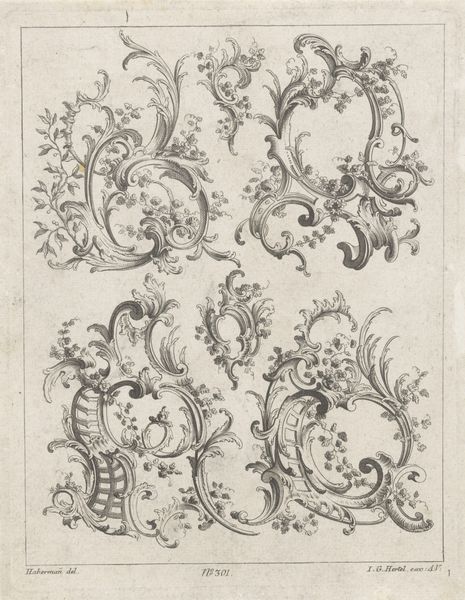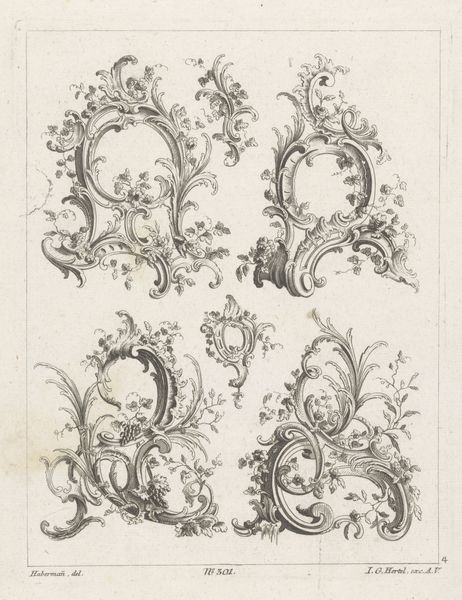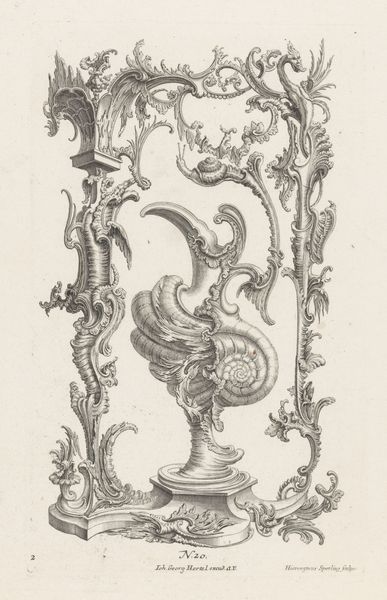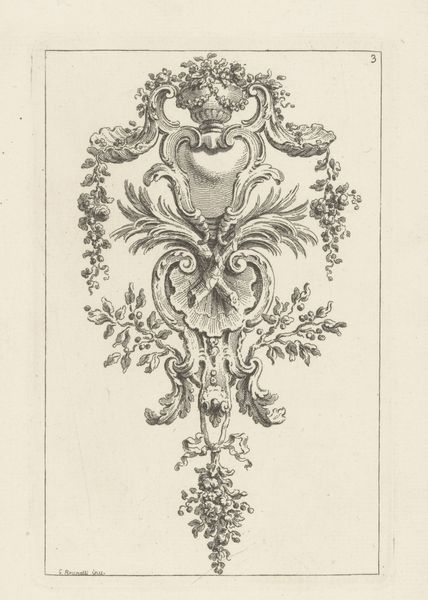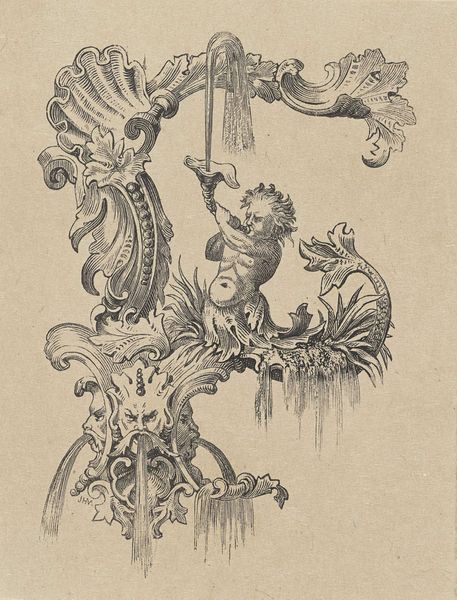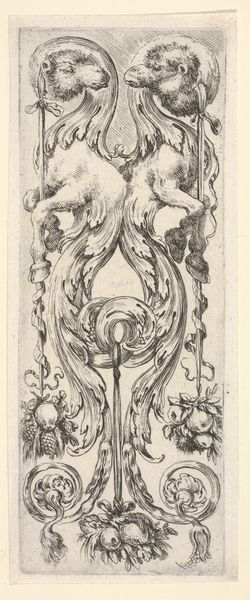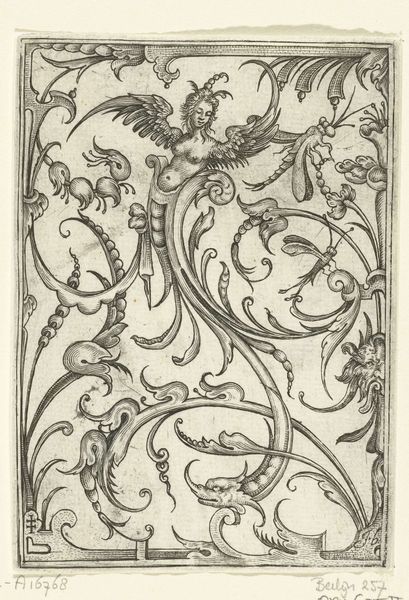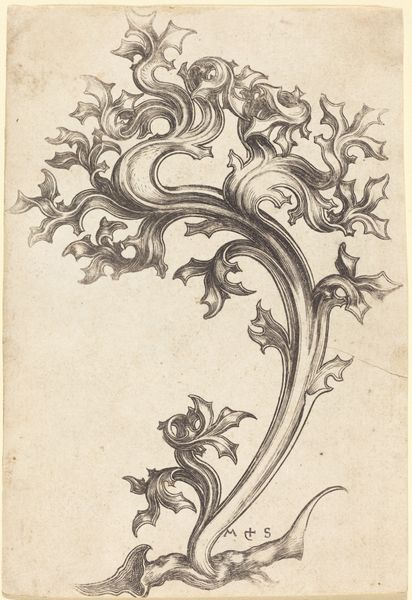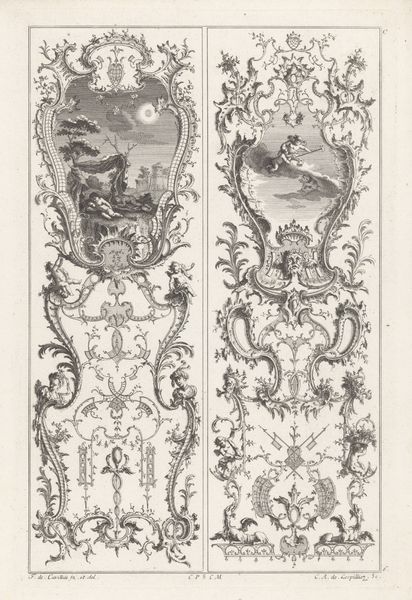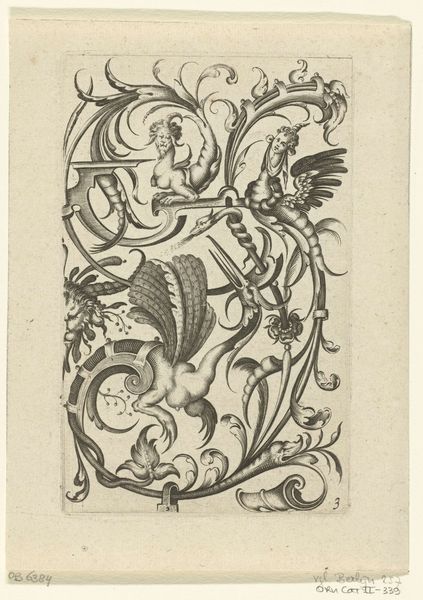
drawing, ink, engraving
#
drawing
#
ink
#
geometric
#
decorative-art
#
engraving
#
rococo
Dimensions: height 254 mm, width 195 mm
Copyright: Rijks Museum: Open Domain
Curator: It feels light, almost playful, doesn’t it? The forms swirl and curve like elaborate frosting. Editor: Indeed. What we’re looking at is a print called "Rocailles", dating roughly from 1731 to 1775. It is housed right here in the Rijksmuseum and crafted with ink engraving. Curator: "Rocaille," so, rock-like? But this is much more fluid. Editor: Exactly. Rococo took the Baroque’s drama and extravagance, transforming it into something lighter, more decorative. Note how geometric frameworks disappear amidst the floral scrolls. These images are pure surface. This was produced by Emanuel Eichel. Curator: A visual feast intended for consumption, not contemplation. I see patterns repeating through the different Rocaille that almost resemble blooming cartouches. Editor: Functionally, it was about enabling more decoration in interiors of that time. Think about how the aristocracy displayed status. Interior architecture and decorative programs signaled refinement. Prints such as this would guide the work of artisans to deliver this Rococo flourish across furniture, porcelain, and architecture. Curator: So this wasn't necessarily “art” as we think of it today but functional material, more akin to a template. I'm especially drawn to how those intertwining organic motifs almost seem to swallow up any rigid structure underneath. It’s a visual representation of nature reclaiming artifice. Editor: In that sense, perhaps the natural overtakes social structures. That certainly holds a political interpretation! These engravings were also very affordable ways to obtain images, not only to support production, but also to cultivate knowledge of artistic trends. They were a visual lingua franca across Europe, promoting a style heavily favored by the aristocracy, even if they came from more humble origins themselves. Curator: The fact that we are still contemplating this, centuries after its creation, makes you think. Art's ability to act as both an active tool for shaping its own present and as a time capsule is astonishing. Editor: Precisely. It embodies that complex interplay between the creation, the politics of the time, and continued impact of Rococo.
Comments
No comments
Be the first to comment and join the conversation on the ultimate creative platform.
